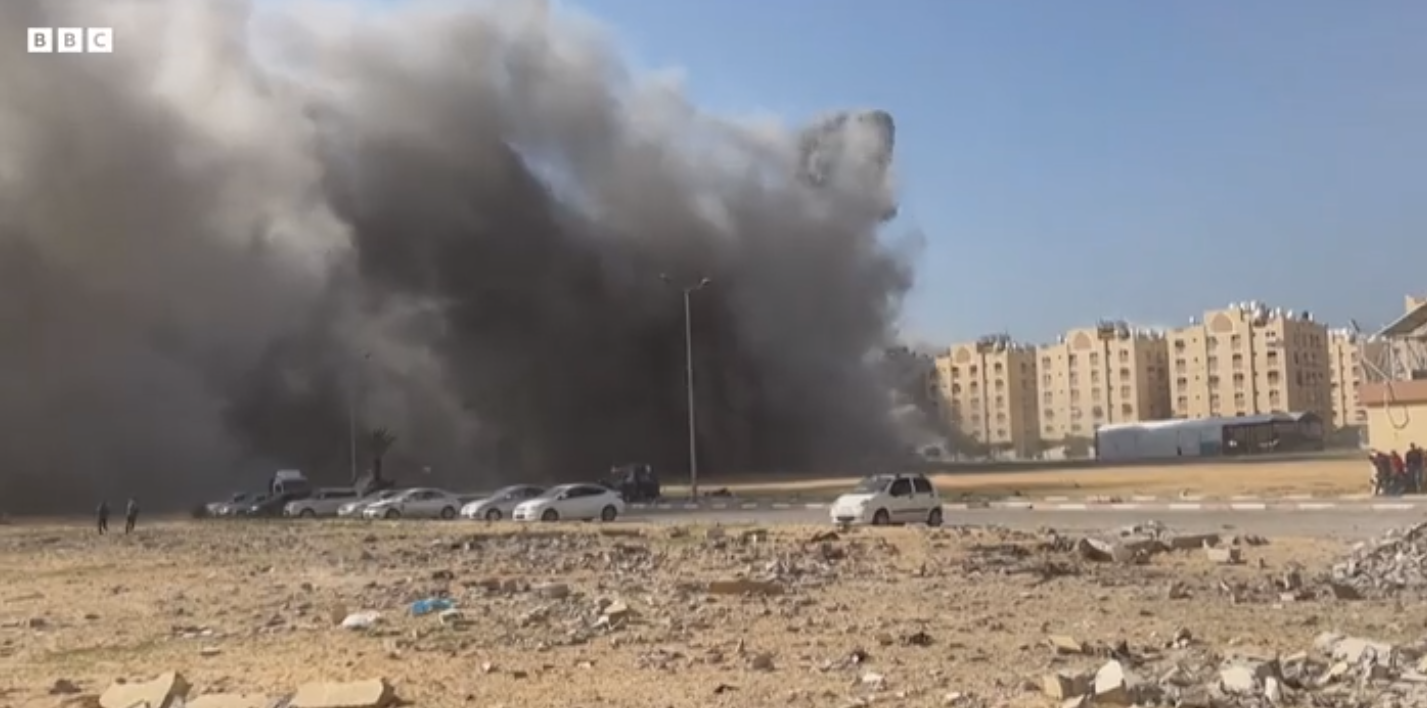Israel strikes in and around Gaza’s second-largest city in an already bloody new phase of the war

KHAN YOUNIS, Gaza Strip (AP) — Israel intensified its bombardment in and around Gaza’s second-largest city early Tuesday, as ambulances and private cars came racing into a local hospital carrying people wounded in a bloody new phase of the war in Gaza.
KHAN YOUNIS, Gaza Strip (AP) — Israel intensified its bombardment in and around Gaza’s second-largest city early Tuesday, as ambulances and private cars came racing into a local hospital carrying people wounded in a bloody new phase of the war in Gaza.
Under U.S. pressure to prevent further mass casualties, Israel says it is being more precise as it widens its offensive into southern Gaza after obliterating much of the north. Aerial bombardment and the ground offensive have already driven three-fourths of the territory’s 2.3 million people from their homes.
At the Nasser Hospital in Khan Younis, ambulances brought dozens of wounded people in throughout the night. At one point, a car pulled up and man emerged carrying a young boy in a bloody shirt, whose hand had been blown off. “What’s happening here is imaginable,” said Hamza al-Bursh, who lives in the neighborhood of Maan, one of several in and around the city where Israel has ordered civilians to leave. “They strike indiscriminately.” Residents said troops had advanced following heavy airstrikes to Bani Suheila, a town just outside Khan Younis. Halima Abdel-Rahman, who fled to the town earlier in the war from her home in Beit Lahiya in the north, said they could hear explosions through the night.
“They are very close,” she said. “It’s the same scenario we saw in the north.”
Satellite photos from Sunday showed around 150 Israeli tanks, armored personnel carriers and other vehicles just under 6 kilometers (3.7 miles) north of the heart of Khan Younis. The army did not respond to a request for comment and rarely publicizes troop deployments. Israel ordered the full-scale evacuation of northern Gaza in the early days of the war and has barred people who left from returning. In the south, it has ordered people out of nearly two dozen neighborhoods in and around Khan Younis. That further reduced the area where civilians can seek refuge in central and southern Gaza by more than a quarter.
Palestinians say that as Israel continues to strike across the besieged territory, there are no areas where they feel safe, and many fear that if they leave their homes they will never be allowed to return.
Israel says it must dismantle Hamas’ extensive military infrastructure and remove it from power in order to prevent a repeat of the Oct. 7 attack that ignited the war. The surprise assault through the border fence saw Hamas and other Palestinian militants kill about 1,200 people, mostly civilians, and capture some 240 men, women and The military says it makes every effort to spare civilians and accuses Hamas of using them as human shields as the militants fight in dense residential areas, where they have a labyrinths of tunnels, bunkers, rocket launchers and sniper nests. Hamas is deeply rooted in Palestinian society, and its determination to end decades of open-ended Israeli military rule is shared by most Palestinians, even those opposed to its ideology and its attacks on Israeli civilians. That will complicate any effort to eliminate Hamas without causing massive casualties and further displacement.
Even after weeks of unrelenting bombardment, Hamas’ top leader in Gaza, Yehya Sinwar, was able to conduct complex cease-fire negotiations and orchestrate the release of more than 100 Israeli and foreign hostages in exchange for 240 Palestinian prisoners last week. Palestinian militants have also kept up their rocket fire into Israel, both before and after the truce. The fighting has meanwhile brought unprecedented death and destruction to the coastal strip.
The Health Ministry in Gaza said the death toll in the territory since Oct. 7 has surpassed 15,890 people – 70% of them women and children — with more than 42,000 wounded. The ministry does not differentiate between civilian and combatant deaths. It says hundreds have been killed or wounded since the cease-fire’s end, and many still are trapped under rubble. An Israeli army official provided a similar figure for the death toll in Gaza on Monday, after weeks in which Israeli officials had cast doubt on the ministry’s count. The official said at least 15,000 people have been killed, including 5,000 militants, without saying how the military arrived at its figures. The military says 84 of its soldiers have been killed in the Gaza offensive.
White House national security adviser Jake Sullivan said Monday that it was too soon to pass judgment on Israeli operations, but that it was unusual for a modern military to identify precise areas of expected ground maneuvers and ask people to move out, as Israel has done in Khan Younis.
“These are the kinds of steps that we have asked them to undertake.” he said. “These are the conversations we’re having day in, day out.” Airstrikes and the ground offensive in northern Gaza have reduced large swaths of Gaza City and nearby areas to a rubble-filled wasteland. Hundreds of thousands of residents fled south during the assault.
Leaflets dropped by the Israeli military over Khan Younis in recent days warn people to head further south toward the border with Egypt, but they are unable to leave Gaza, as both Israel and neighboring Egypt have refused to accept any refugees. The area that Israel ordered evacuated was home to some 117,000 people, and now it also houses more than 50,000 people displaced from the north, living in 21 shelters, the U.N. said. It was not known how many were fleeing.
Adding to the chaos, phone and internet networks across Gaza collapsed again Monday evening, the Palestinian telecom provider PalTel said. It was the latest of several outages that have complicated rescue efforts. Communications were restored early Tuesday.